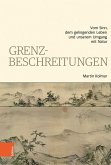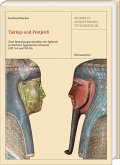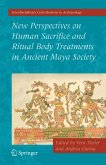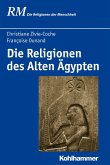Every evening the sun becomes old and weak and finally sets behind the Western horizon. Yet, it rises again in the morning, rejuvenated. How is that possible? How could the sun -- for the Ancient Egyptians the Sun god -- become young and revitalized during the night, during his night-journey? What happens during this time? Knowledge for the Afterlife is a guide to the Amduat, the earliest illustrated religious text about the world after death, found in the Egyptian tomb of Tuthmosis III. It helps the reader to understand its cryptic depiction and its symbolic meaning. The Amduat is a description of the journey of the Sun god through the twelve hours of the night-world to his renewal in the morning, which is also the world of the deceased. The knowledge contained in the Amduat was meant for the dead Pharaoh. But the knowledge of the text and the images are also "good for the people on earth -- a million times proven", as we read in the Amduat, which was created 3500 years before our time. The authors show that the journey of the Sun god can be seen as a symbolic representation of an inner psychic process of transformation and renewal. Each of the twelve hours contains an enormous amount of insight into the human psyche. As a first overall vision of humankind it describes or maps the dangers, but also the regenerative capabilities of the night-world that we call today the unconscious world, providing answers to basic human questions. The reader learns, that -- symbolically speaking -- if an individual can consciously accompany the Sun god on his journey through the netherworld, he or she can learn from him how to relate to these both dangerous and helpful forces. He or she would acquire an insight into the secret of eternal renewal and would thus obtain a feeling of being close to the immortal Sun god. That is why the Amduat says repeatedly: "It is good for the dead to have this knowledge, but also for a person on earth, a remedy -- a million times proven." The aim of the Amduat is for the reader to become conscious of the guiding function of the inner Sun god or of the "inner great human". The Amduat, written 3500 years ago, contains in a nutshell the knowledge necessary to reunite the individual soul with this inner guiding light. This knowledge was later more clearly differentiated by all great religions. This book is a kind of guide through the twelve hours of the nocturnal process of the regeneration of the Sun god. It first presents the historical background and then the journey of the Sun god through the twelve hours of the night. The descriptive parts are by Erik Hornung, Prof. Emeritus of Egyptology in Basle and well-known author of many books on Egyptology. The psychological comments are by Theodor Abt and are based on lectures given at the C.G. Jung Institute in 1988, and later in detail at the Centre for Depth Psychology, 1998-2000.








